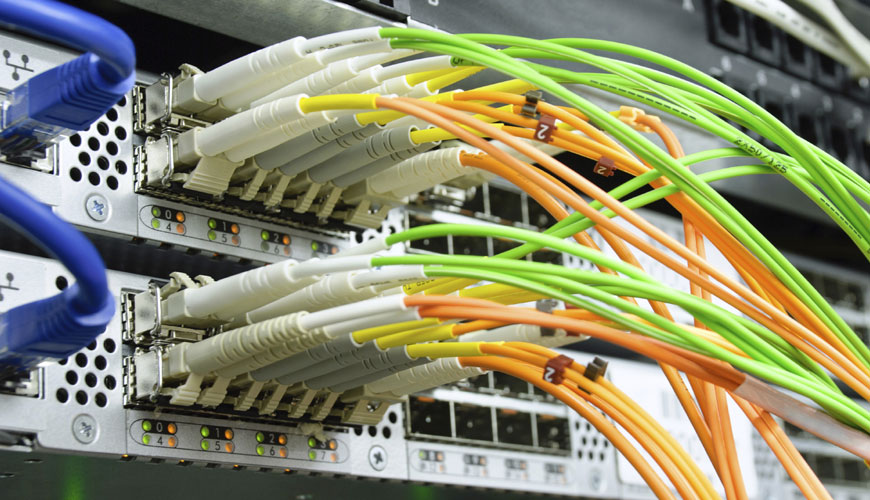

EUROLAB laboratory provides testing and compliance services within the scope of IEC 61300-2-22 standard. This part of the IEC 61300 standard describes a procedure for determining the suitability of a fiber optic device to withstand the effects of a temperature change or successive temperature changes. The device consists of suitable environmental chambers according to IEC 60068-2-14, test Nb.

This procedure is performed in accordance with IEC 60068-2-14, test Nb. The device under test (DUT) is first subjected to an overtemperature for a certain period of time. It is then subjected to the other extreme temperature for an equal period of time.
The DUT is maintained under standard atmospheric conditions for a minimum of 2 hours, unless otherwise specified in the relevant specification. The mechanical and optical alignment parts of the DUT should be cleaned according to the manufacturer's instructions. Initial inspections and measurements are made as required by the relevant specification.
Unless otherwise stated, the temperature profile will be applied. It starts at standard atmospheric conditions and ramps up to a low TA temperature at 1 °C/min. During t1, the low temperature must be maintained for a minimum of 60 minutes. Ramp up to high temperature TB at 1 °C/min. Temperature is maintained during t1, then ramped to low temperature and this profile repeated for the required number of cycles.
Optional cycling, for some performance categories it may be necessary to ramp to high temperature first and add a room temperature wait between ramps to extreme temperatures. Increasing the residence time of each tip is allowed to allow sufficient time to perform a complete set of measurements.
The sample should be allowed to remain under standard atmospheric conditions for at least 2 hours. Final measurements are recorded as required by the relevant specification. Unless specified otherwise in the relevant specification, the DUT should be cleaned according to the manufacturer's instructions before final measurements are recorded.
EUROLAB, with its more than 25 years of experience, state-of-the-art accredited laboratories and expert team, helps you get precise and fast results. Do not hesitate to contact our laboratory for your testing and certification requests.
To get an appointment, to get more detailed information or to request an evaluation, you can ask us to fill in our form and reach you.